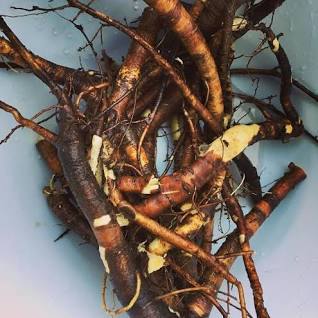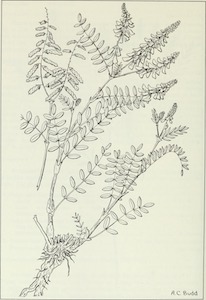 Return to Specific Plants Discussed in Oral History Interviews page
Return to Specific Plants Discussed in Oral History Interviews page
Eskimo or Indian Potato (masu in Iñupiaq), commonly known as alpine sweet vetch, refers to the root of the plant that is dug up and eaten by Alaska Native people throughout the state. Eskimo/Indian potatoes are also found as part of the “mouse food” cache that is often harvested by humans. Eskimo/Indian potatoes are usually eaten fried, or cut up and preserved in seal oil.
The alpine sweet vetch plant (Hedysarum alpinum) bears close resemblance to the sweet pea plant (Hedysarum mackenzii) and the bear root plant, parts of which can cause stomach problems or be poisonous if consumed. So it is important to be extra careful when harvesting eskimo/indian potato, and to consult a plant expert or book before digging up the plant.
Listen to Mary Hobson, Dena'ina Athabascan from Nondalton, Alaska, talk about digging, storing and eating roots. Or read the transcript (ORAL HISTORY 98-27-22, Side B).


